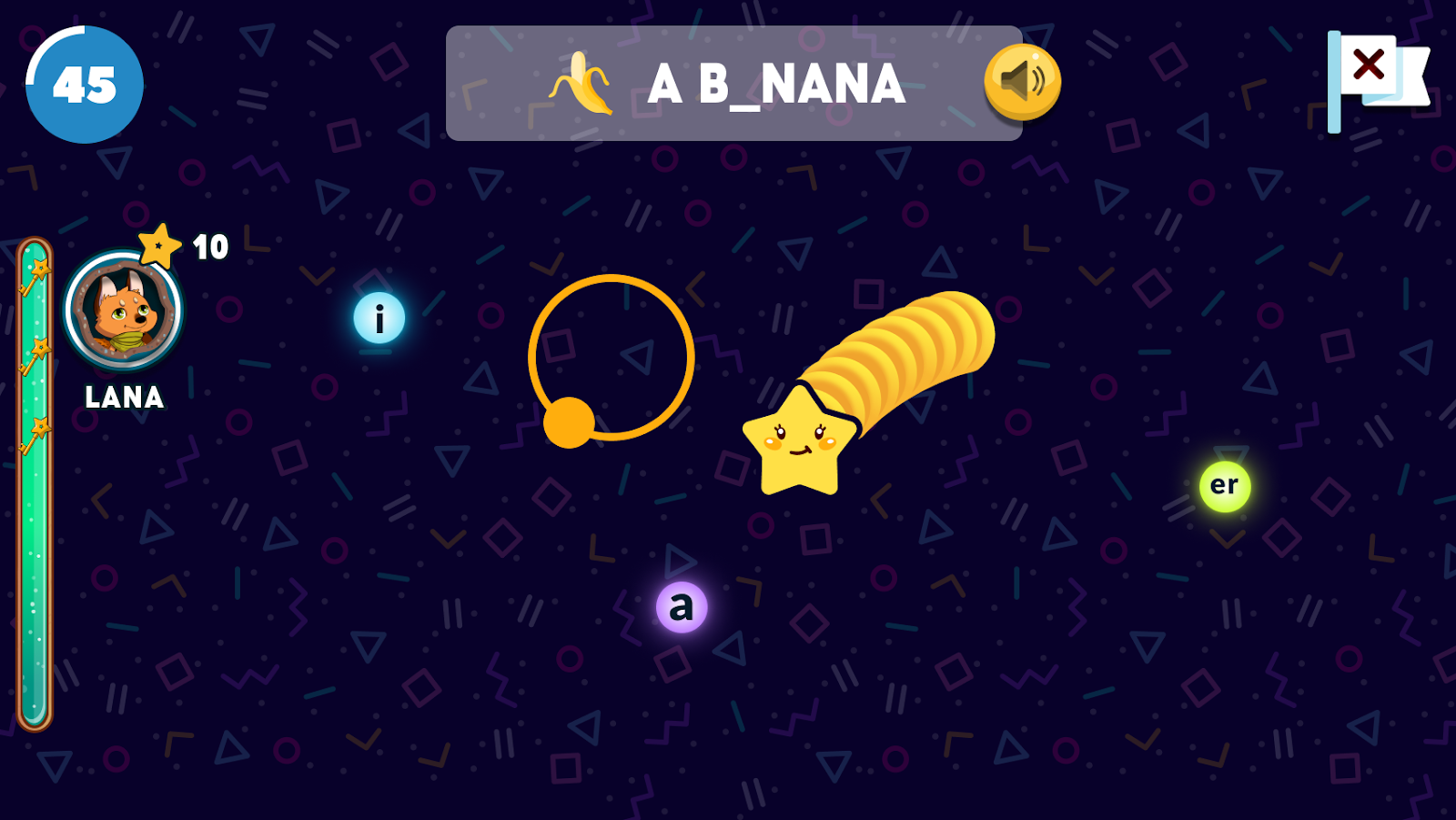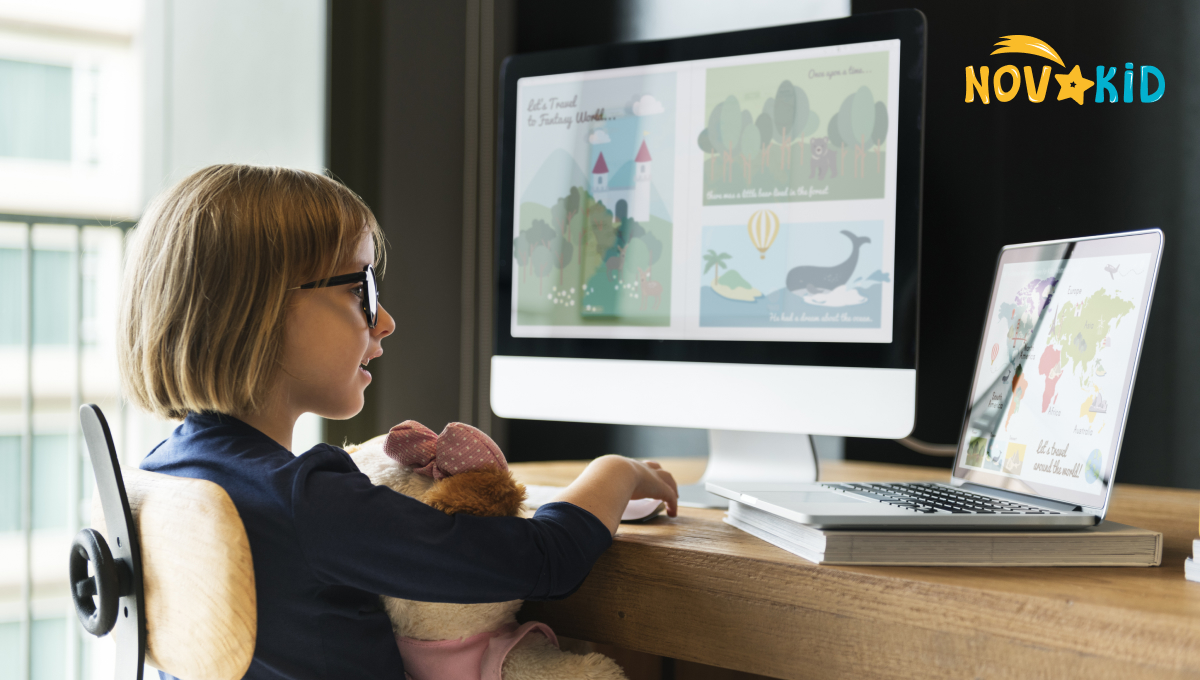Can you remember when you learned how to swim? Were you inside or outside of the water? Did you learn by staying away from the water and reading about swimming? Probably not. You began learning only when you were in the water.
Learning by doing is how we approach teaching at Novakid online English school for children. We create immersive online lessons where students need to use English to learn English.
While that might sound a bit odd, language immersion has proven to be one of the most effective language teaching methods there is.
By using techniques such as PPP, TPR, gamification and repetition within our immersive classrooms, we ensure that students learn in a way that will help them understand new English concepts. So, what are these techniques and how do they help students?
Language immersion and PPP
Immersive learning is like learning to swim. The lesson is a swimming pool, the language is the water surrounding the student, and the teacher is a swimming coach who helps them “swim” in a natural language environment.
Our swimming coaches (or teachers) always help and support where necessary, so parents and caregivers can rest assured that students won’t have any problems understanding new grammar and vocabulary concepts.
Using immersion-based learning techniques means that students study English with native and fluent English speakers without the use of translation, translation devices or native language support.
To teach students English through immersive learning without translation and native language support, our teachers use the PPP approach:
- Presentation: a teacher contextualises new vocabulary to help the student understand its meaning
- Practice: the student practises these new words in various ways (reading, speaking, listening, games etc.)
- Production: the teacher encourages the student to produce the newly learnt vocabulary through speech
What can I do if the student is scared of lessons with someone who can’t speak their language?
This is perfectly normal. It’s something most ESL learners feel at some point or another. We recommend that parents or caregivers attend the first few lessons with students to provide emotional support and help them form a bond with their English teacher. Your support is just like those armbands they use when they first learn to swim, providing reassurance.
The bond they gradually form with their teacher is stronger than words and language, and will quickly help them become independent as they begin to trust themselves and their teacher. They will be swimming without armbands in no time. Just don’t wait too long to take them off!

TPR to help students understand new concepts
To help students understand what lessons are about, teachers mime, gesture and use physical movements to engage them with lesson content. This method is also known as Total Physical Response (TPR) and encourages students to move along with the teacher. They can wave, gesture, dance and even jump up and down with their teacher if it helps them learn, understand and have fun.
Picture a swimming coach showing a group of students how to rotate their arms and kick their legs with the students following along- and learning how to swim. TPR works something like that.
Gamification to keep your child interested and motivated
Games! Who doesn’t love games? Games are invaluable tools to inspire interest and passion for learning English. That’s why Novakid uses games and gamification as part of the learning process.
In our lessons, we present and practise language concepts through interactive games and activities that require students to listen, read and speak.
The games on our gaming platform, called mini-games, are created around our curriculum and link to the level, unit and lesson in which a student is currently placed.
By playing these games with different students from all over the world, students can practise and revise what they have learned in their lessons. We like to think of it as playing some water polo after a swimming lesson- students get to have fun and practise their skills!
To repeat or not to repeat? That is the question!
To repeat, of course! One of the most important aspects of language learning is repetition.
Research shows that repetition and exposure to spoken words are key factors for developing and retaining vocabulary. That’s why our lessons are designed to have students revise previously learned vocabulary while learning new language concepts.
Think about it like this: when a student learns to swim, their muscles are weak and need to develop through repeated practice- doing the same movements and physical activities over and over again. The more they repeat these movements, the stronger they become and the better they swim. Language learning in immersive classrooms works in the same way.
Just like learning to swim, learning a new language can be tough and challenging at times- especially in an immersive online classroom. But, by following along with the teacher, repeating and practising new concepts, all while having fun, students become comfortable with learning by doing. The more comfortable they become, the better and more confident they become at using English.
By Katerina Smirnova, Novakid´s digital learning expert.
Sources:
- A critical review of the Presentation-Practice-Production Model (PPP) in Foreign Language Teaching by Raquel Criado, 2013.
- Exploring a Gamified Learning Tool in the ESL Classroom: The Case of Quizizz by Tan Kim Hua, 2021.
- Immersion Teaching: Successful Approaches by Anthony Jackson, 2013.
- Rapid formation and activation of lexical memory traces in human neocortex by Lilli Kimppa, 2017.
- The Effectiveness of TPR (Total Physical Response) Method in English Vocabulary Mastery of Elementary School Children by Ice Sariyati, 2013.
- What the Research says about Immersion by Tara Williams Fortune.









































